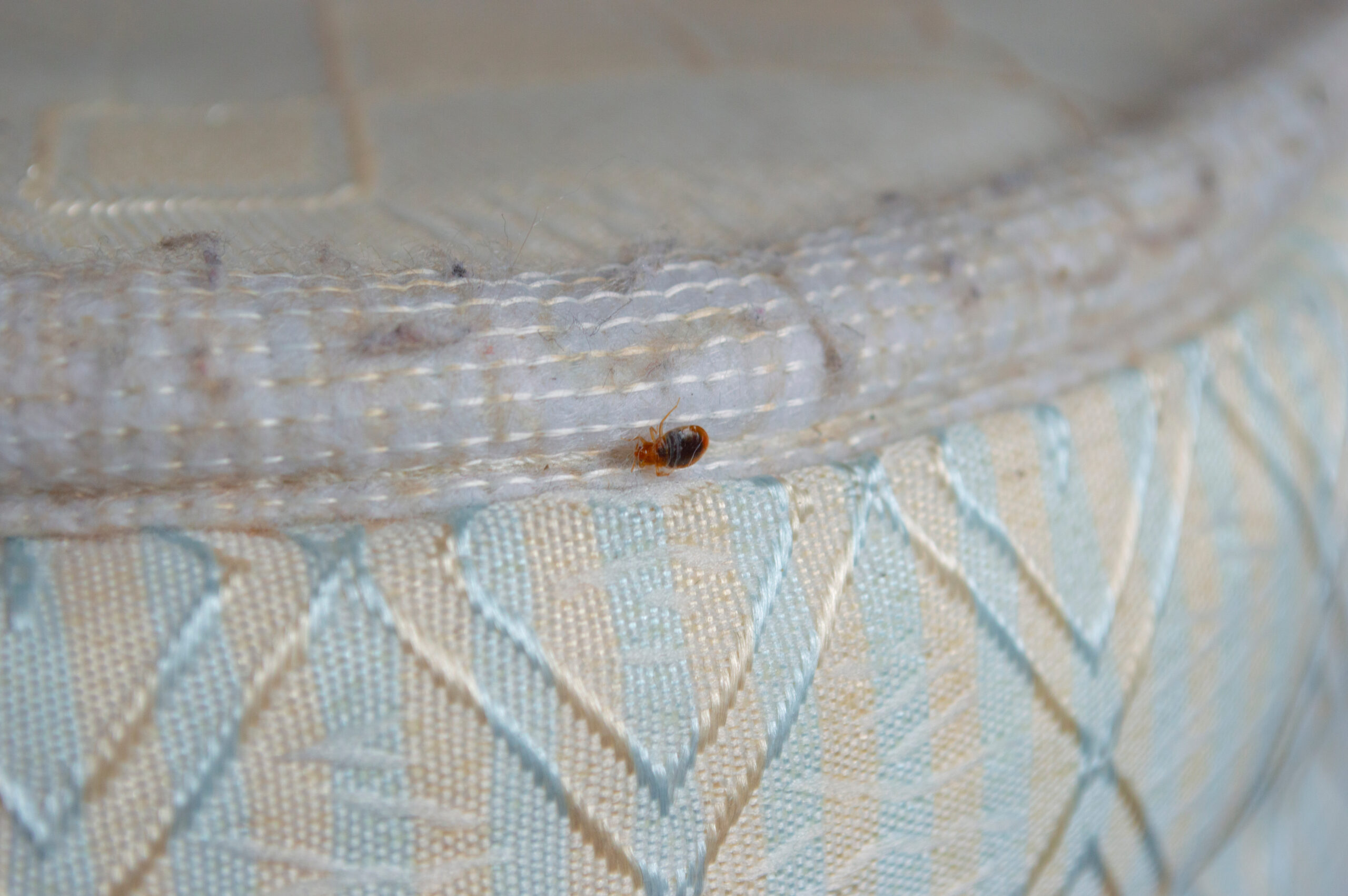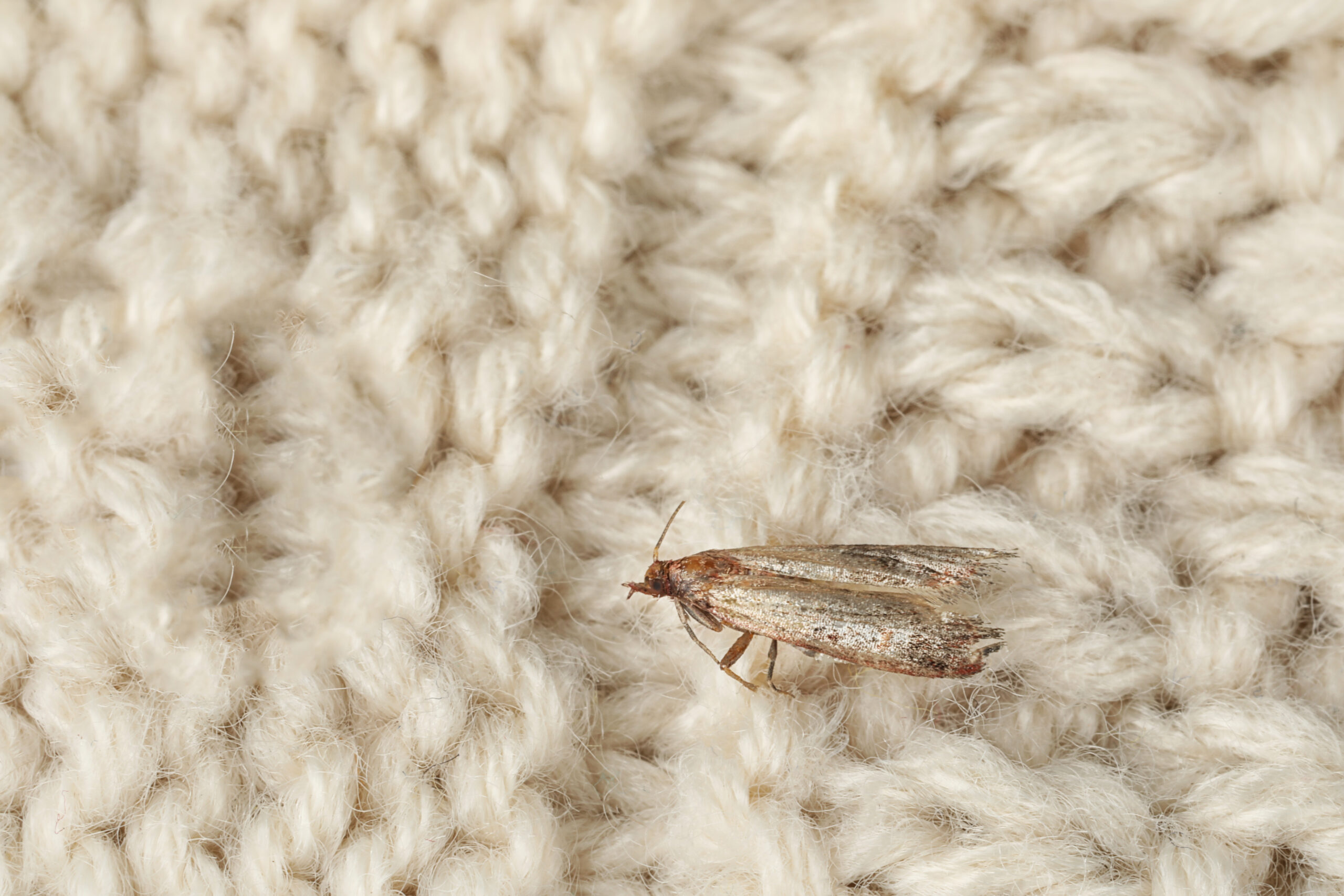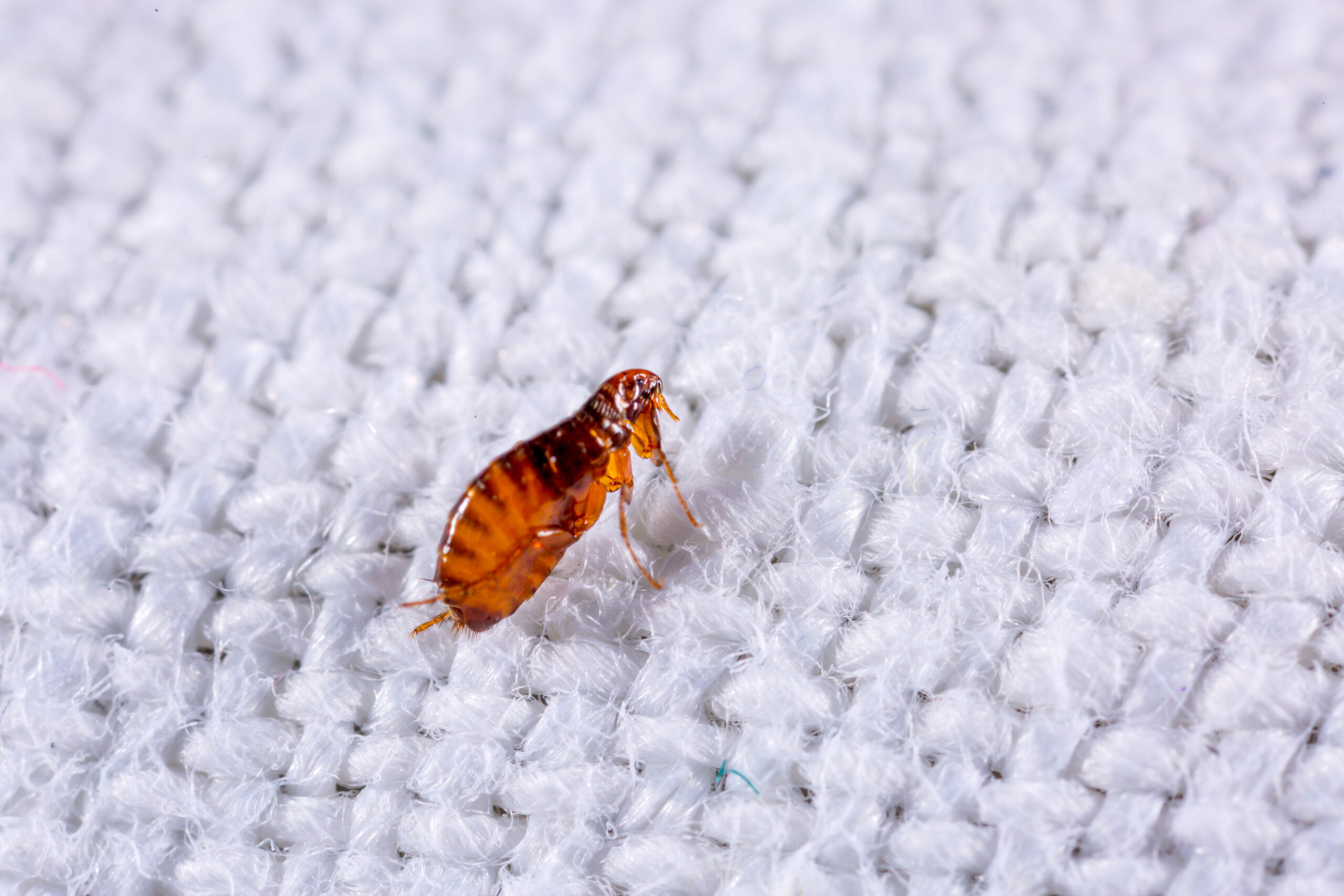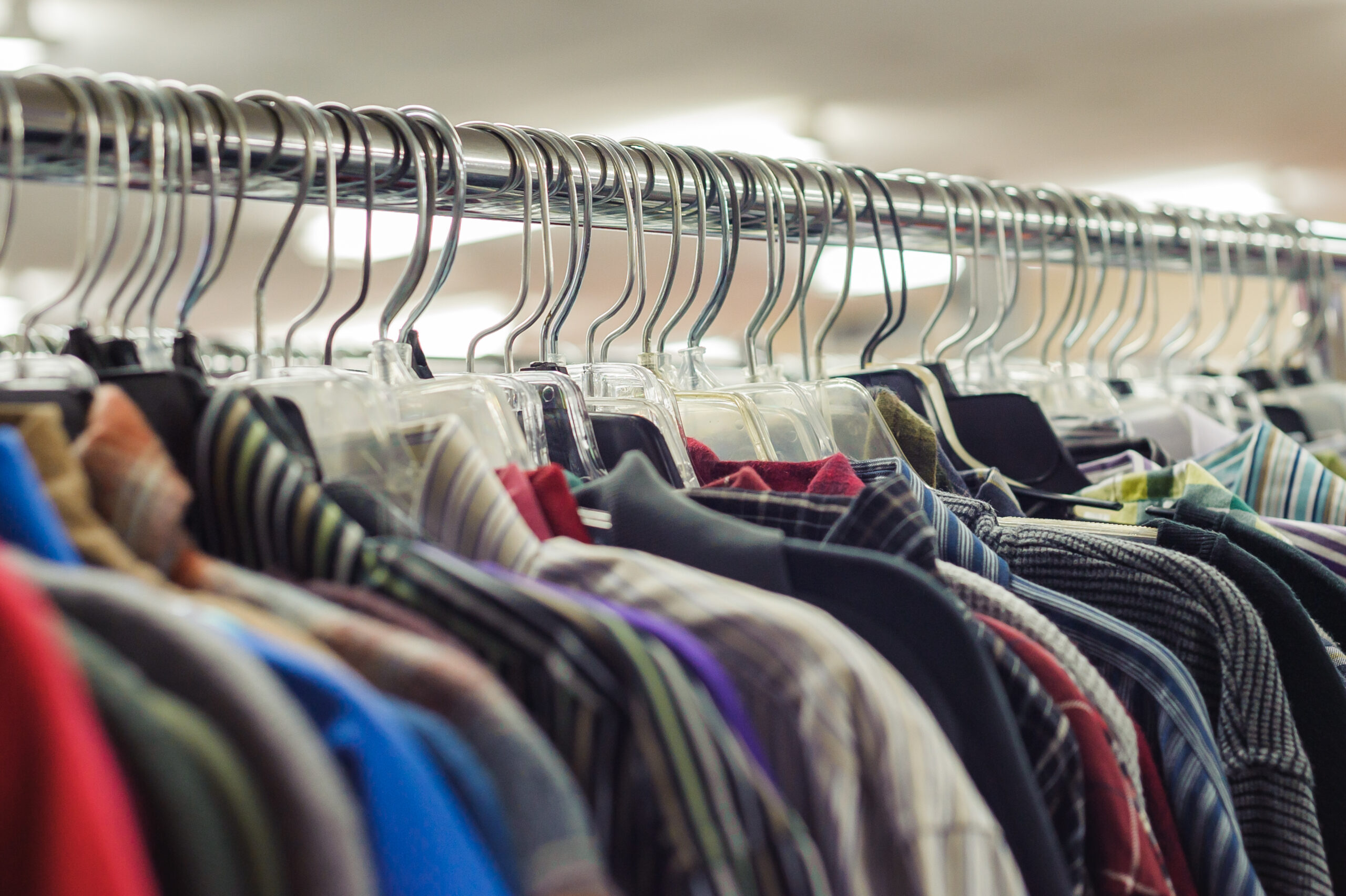How to Shop Secondhand Pest-Free
How to Shop Secondhand Pest-Free
Shopping at thrift stores and secondhand shops — aka “thrifting” — has become quite the trendy pastime over the past decade. What started as an easy way for people to purchase gently-used items that are far more affordable than retail products is now a popular hobby, especially among the younger population. It is a fun experience to visit a thrift store and peruse the endless racks of vintage clothing, stacked shelves of cookware, and piles of used books.
That being said, there is an additional risk involved when shopping secondhand. We as the customers don’t know where the items came from or how long they have been sitting out. The unknown origins of the used items can be a troubling thought when we consider the fact that there could be an army of pests hiding within, and we are none the wiser until we purchase them and inadvertently bring home an infestation! It’s important to stay vigilant while thrifting, which is why we’re discussing three of the most common pests found on secondhand items before diving into a full list of ways to ensure that you are only purchasing pest-free treasures.
Bed Bugs
Anyone who has experience in thrifting will be the first to tell you that the most notorious pest for secondhand items is the bed bug. This insect doesn’t solely live on beds — contrary to its name — as it can hide within all kinds of items. They are reddish-brown and completely flat due to their ability to compress their bodies when squeezing into tight spaces. Bed bugs are often discovered in the seams, cracks, pockets, and buttons of fabric items, especially within furniture. They can also slip into the vents and holes of nearby electronics. When a secondhand item has bed bugs, that means it came from an infested place. These pests can live for a year without food, making them an especially frustrating pest due to their extreme patience. Most items can be treated to eliminate the inhabiting bed bugs, so don’t throw out anything with bed bugs without researching treatment methods first.
Clothes Moths
If you frequently buy clothing from thrift stores, keeping an eye out for these pests is a great habit to get into. Clothes moths need to live on clothing and other items made of various fabrics. They are often found on coats, sweaters, blankets, dolls, formal wear, and wall hangings. The adult moths are about half an inch long, light brown, and winged. They don’t pose any danger to humans besides the frustration they cause by eating holes in our clothing. Interestingly enough, the adult clothes moths aren’t even the most destructive; their larvae are responsible for eating straight through most fabrics. The female moths lay their eggs on a fabric-covered item, then the hatched eggs diligently chew through the material to build up their strength. Clothes moth larvae love the keratin protein in certain fabrics, like cashmere and wool. Clothes moths prefer areas that are dark and moist, so they often live in closets and wardrobes before accidentally being brought to the thrift store on their inhabited items.
Fleas
We often think of fleas as wanting to solely live on our furry friends, but the trouble can begin long before they set sight on our dogs and cats. While fleas prefer to lay their eggs on a host in order to provide their offspring with an immediate food source, they also like to live on upholstered and fabric-covered items. Fleas can only live for several days without food — some species can go 2 weeks — so they won’t survive living in a thrift store for months on end. If you find fleas on an item or on the carpeting, it’s because they were recently introduced on a new item or person. Fleas are often found on rugs, clothing, stuffed animals, and blankets. They especially favor pet-related items, such as beds, blankets, outfits, and toys. While fleas can live on both people and pets, they prefer furry pets because of the additional security that the fur provides. If you like to thrift items for your precious pet, make sure that you aren’t inadvertently bringing a flea family home to them as well!
The Best Ways To Avoid Thrift Store Pests
With these pests in mind, it’s easy to see why inspecting each item before purchasing it is an essential part of thrifting. No matter what you buy from your favorite thrift store or flea market, these tips will greatly increase your chances of having a pest-free shopping experience.
These are our tried-and-true ways to ensure that your thrifted items are pest-free both before and after you buy them:
- In general, do not pick up any kind of furniture that is labelled “free” and is just sitting outside on the curb, in an alley, or any other random place. That green-colored couch on the side of the road may be tempting, but the high risk of it containing bloodsucking pests and cat urine stains is not worth the aesthetic appeal.
- Inspect every single item that you find at a thrift store, secondhand shop, and flea market. Anything can contain hidden pests since all species have their own diets and preferences. Pay close attention to the seams, cracks, and gaps of larger items, as these are where smaller pests like to hide.
- Use a flashlight (either on your phone or an actual one) to inspect all corners of larger pieces of furniture. Headboards, desks, table, chairs, wardrobes, dressers, bookshelves, and entertainment centers can all house smaller pests that stay hidden from view. Check the corners and any interior sections for sneaky creepy-crawlies.
- Check all sides of fabric-covered items for stains. It’s a good rule of thumb to avoid any items that have those questionable stains (you know the ones), but even smaller spots can mean trouble. Dark-colored dots can be the droppings from insects or spiders, while red-colored spots can be bloodstains from bed bugs.
- Be cautious when looking into buying a used mattress. These should be labelled that they were completely cleaned and treated, but you can never be too careful with these items. Mattresses can, of course, house numerous bed bugs who are just waiting for their next feeding opportunity. In fact, try to only buy new mattresses if possible.
- Shake out all used clothing before bringing it home. The front of the clothing may seem fine, but tiny pests can hide within the folds and pockets. Fleas, clothes moths, carpet beetles, and bed bugs can all be found in clothing items. It’s also a good idea to check all of the seams since small pests prefer these areas for hiding.
- Carefully inspect all edges and seams of used furniture before purchasing. Upholstered furniture in particular is a frequent breeding ground for all kinds of fabric-loving pests, so bringing an infested piece home would mean introducing a new pest population to your space. If the couch or chair has removable cushions, take them out and check for any signs of pests.
- After you bring your treasures home, wash all soft items immediately. Clothing, blankets, stuffed animals, sheets, and towels all need to be thoroughly washed to remove any traces of pests if there are any present. It’s preferable to throw all of your new items straight into the washing machine rather than keeping them in the dirty clothes basket and potentially contaminating your other laundry items.
- Speaking of smaller fabric items, dry everything in the dryer right after washing them. The heat from the dryer will kill any lingering pests. Heat treatment is so often used against bed bugs because they are impervious to traditional pesticides but can’t survive temperatures above 118 degrees. When in doubt, dry it out!
- If you purchase any upholstered furniture, clean it as soon as you bring it home. The longer that a pest-inhabited piece of furniture sits, the more time the pests have to reproduce and spread out into your home. Vacuum the furniture to remove any larger debris and pest residue, then steam-clean it to thoroughly cleanse it of any deep-set substances.
- All “hard” items should also be sanitized once you get home. Meaning, anything that is not made of fabric and therefore cannot be thrown in the washer or be steam-cleaned needs to be sanitized through a different method. Tables, desks, books, knick-knacks, and electronics should all be wiped down with an antibacterial wipe or spray. This serves two purposes by completely sanitizing the object and removing all traces of pest activity.
Prevent Pests Young and Old With Pointe
In an ideal world, we wouldn’t have to examine everything we buy and own with a careful eye, but pests unfortunately exist. Pest prevention and elimination is most effective when the treatments are intentionally targeted at the specific pests involved, and that is exactly what the expert technicians of Pointe Pest Control provide. Our highly-trained technicians start by inspecting the property for all signs of pest activity and structural damage. We then create a treatment plan that is completely customized to solve each pest issue as efficiently as possible, thanks to our effective yet still family-friendly treatments. Our team is dedicated to protecting your home or business from invasive pests all year long. Contact us today for a free quote on our reliable pest control services that will leave you with a pest-free space that feels like new!
Citations
Don’t let fabric pests ruin your wardrobe. (2014, October 15). Truly Nolen. Retrieved November 20, 2023, from https://www.trulynolen.com/pest-expert-tips/dont-let-fabric-pests-ruin-your-wardrobe
How to ensure a thrift store trip doesn’t lead to a pest infestation. (2022, August 15). Advanced Pest Control of Alabama, LLC. Retrieved November 20, 2023, from https://pestcontrolalabama.com/how-to-ensure-a-thrift-store-trip-doesnt-lead-to-a-pest-infestation/
Mattern, J.L. & Chilton, C. (2021, February 25). 40 things you should never buy at a thrift store. Country Living. Available at https://www.countryliving.com/shopping/antiques/g4877/things-you-should-never-buy-at-a-thrift-store/ (Accessed on November 20, 2023).
McKindra, L. (2017, November 22). Avoiding bed bugs before, after thrift store purchases. Stillwater News Press. Available at https://www.stwnewspress.com/news/avoiding-bed-bugs-before-after-thrift-store-purchases/article_44c21784-cfcc-11e7-beb0-b3a25e627e7e.html (Accessed on November 20, 2023).
Peek, G. & Lee, J. (2017, April). Bed bugs — Reduce risk while thrift shopping. OSU Extension. Available at https://extension.okstate.edu/fact-sheets/bed-bugs-reduce-risk-while-thrift-shopping.html (Accessed on November 20, 2023).
Secondhand items: Which are most prone to bed bugs and which are safe to keep. (n.d.). Proof. Retrieved November 20, 2023, from https://bugproof.com/blogs/blog/secondhand-items-which-are-most-prone-to-bed-bugs-and-which-are-safe-to-keep
Request a Free Quote Today
(We do not share your data with anybody, and only use it for its intended purpose)




